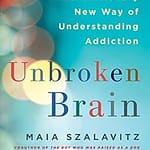Photo by Francesco Ungaro
Some days just feel heavier than others.
When you’re caught in the grip of depression, addiction, or both, it can feel like you’re stuck in a loop you can’t escape.
It’s like you’re slowly drowning and no one notices. The pressure keeps building, and even the simplest tasks can start to feel like climbing a mountain.
The Twelve Step Program was originally designed to support those recovering from alcohol addiction, and these steps have since helped millions navigate not only substance struggles but also the emotional weight of depression.
Real healing starts with the right support and the kind of strength that goes deeper than just willpower. You don’t need to have all the answers — you just need a place to start. So forget quick fixes or pretending everything’s okay. We’ve got work to do.
How the 12 Steps Support Recovery from Depression and Addiction
The Twelve Step Program is often linked with addiction recovery, but it’s really about personal growth and making positive changes in one’s life.
If you’re ready to work on yourself and make some changes this year, we’ve got you covered. This quick the Twelve Steps framework will guide you through the process.
What is the Twelve Step Program?
The Twelve Step Program started with Alcoholics Anonymous (AA) back in 1935 to help people struggling with alcohol addiction.
Since then, it’s been used for all kinds of issues like drug addiction (Narcotics Anonymous), gambling (Gamblers Anonymous), and more.
So basically, It is a set of principles that helps you reflect on your life, make peace with yourself, and start your healing journey.
The goal of the Twelve Step Program is to support you in feeling better and live a more fulfilling life, whatever your struggle may be.
The 12 Steps – A Simple Breakdown:
- Admit you can’t control it: Accept that you don’t have control over your problem, and that it’s bigger than you.
- Believe in a higher power: Whether you call it God, the universe, or something else, trust that there’s something greater than you that can help.
- Turn your life over: Let go and give your life to that higher power.
- Look at yourself honestly: Take a hard look at what you’ve done and how you’ve acted.
- Own up to your mistakes: Admit to yourself and someone you trust what you’ve done wrong.
- Be ready for change: Be open to letting go of your negative traits and improving yourself.
- Ask for help: Humbly ask your higher power to help you change and become a better person.
- Make a list of people you’ve hurt: Think about the people you’ve wronged and be willing to fix things.
- Make amends: Do what you can to fix the damage you’ve caused to others.
- Keep checking yourself: Stay aware of your actions and be honest when you mess up.
- Connect with your higher power: Spend time in prayer or meditation to build your spiritual connection.
- Help others: Share what you’ve learned and help others who are going through the same thing.
Key Ideas Behind the Twelve Step Program
- Spiritual, not religious: The Twelve Step Program isn’t about religion. It’s spiritual. You don’t have to believe in a specific religion, just in something bigger than yourself. That higher power could be God, nature, or whatever gives you strength.
- Admitting powerlessness: The first step is all about realizing you can’t control everything. therefore you want to let go of shame or guilt and accepting help from others and your higher power.
- One day at a time: Take it one day at a time. The program is about making small changes every day, instead of trying to fix everything at once. It’s all about progress, not perfection.
- Looking inward: Steps like taking a moral inventory and admitting wrongs are meant to help you understand your behavior and improve yourself. It’s a process of self-reflection that leads to real growth.
- Helping others: One of the best ways to heal is to help others who are going through similar struggles. Not only does it build a sense of community, but it also reinforces your own progress.
Common Belief About the Twelve Step Program
- It’s only for addicts: The program started with alcohol, but it’s been adapted for lots of different struggles, from overeating to relationships to just personal growth. It’s about making positive changes in any part of your life.
- It’s all about religion: The Twelve Step Program is spiritual, not religious. You can believe in whatever works for you, and there are no specific religious rules.
- You have to go to meetings: While meetings are a big part of the program and offer great support, you don’t have to go to them. Some people find help through online groups or even by working through the steps on their own. Although i would highly suggest checking out website like, meetup.com for local meet ups.
Why Does the Twelve Step Program Work?
It works because it gives you a structured way to reflect on your life, make changes, and connect with a higher power. It’s about taking responsibility, letting go of negative patterns, and building a support system with people who understand what you’re going through. It’s not about being perfect—it’s about getting better one day at a time.
The program’s principles—like self-awareness, humility, and helping others—are really universal.
They can help anyone, whether you’re dealing with addiction, relationship problems, or just want to grow as a person.
How to Get Started
If you’re curious about the Twelve Step Program, a good first step is to check out a meeting or support group. You can find AA, NA, or other Twelve Step groups in your area.
Many offer free meetings where you can learn more about the program and decide if it’s for you. You can also find books, websites, and therapists who can guide you through the steps.
The key is to take things at your own pace.
You don’t have to follow everything to the letter T—just be open to the process and take the steps that work for you.
Final Thoughts
The Twelve Step Program isn’t some overnight fix, but it is however, a steady path to real, lasting change. It’s really about turning inward, getting the support you need, and taking it one honest step at a time. Whether you’re facing addiction, depression, or just trying to find your footing again, the Twelve Steps can be a solid guide on your journey toward healing and growth.




![Healing What You Can't Erase by Christopher Cook [Book Review] healing](https://mlfwe0uloqyb.i.optimole.com/w:150/h:150/q:mauto/rt:fill/g:ce/ig:avif/https://www.leapessence.com/wp-content/uploads/2025/01/healing.jpg)



![What Is The Miracle Morning Routine by Hal Elrod [Book Review] What Is The Miracle Morning Routine by Hal Elrod [Book Review]](https://mlfwe0uloqyb.i.optimole.com/w:150/h:150/q:mauto/rt:fill/g:ce/ig:avif/https://www.leapessence.com/wp-content/uploads/2017/12/IMG_2626.png)

